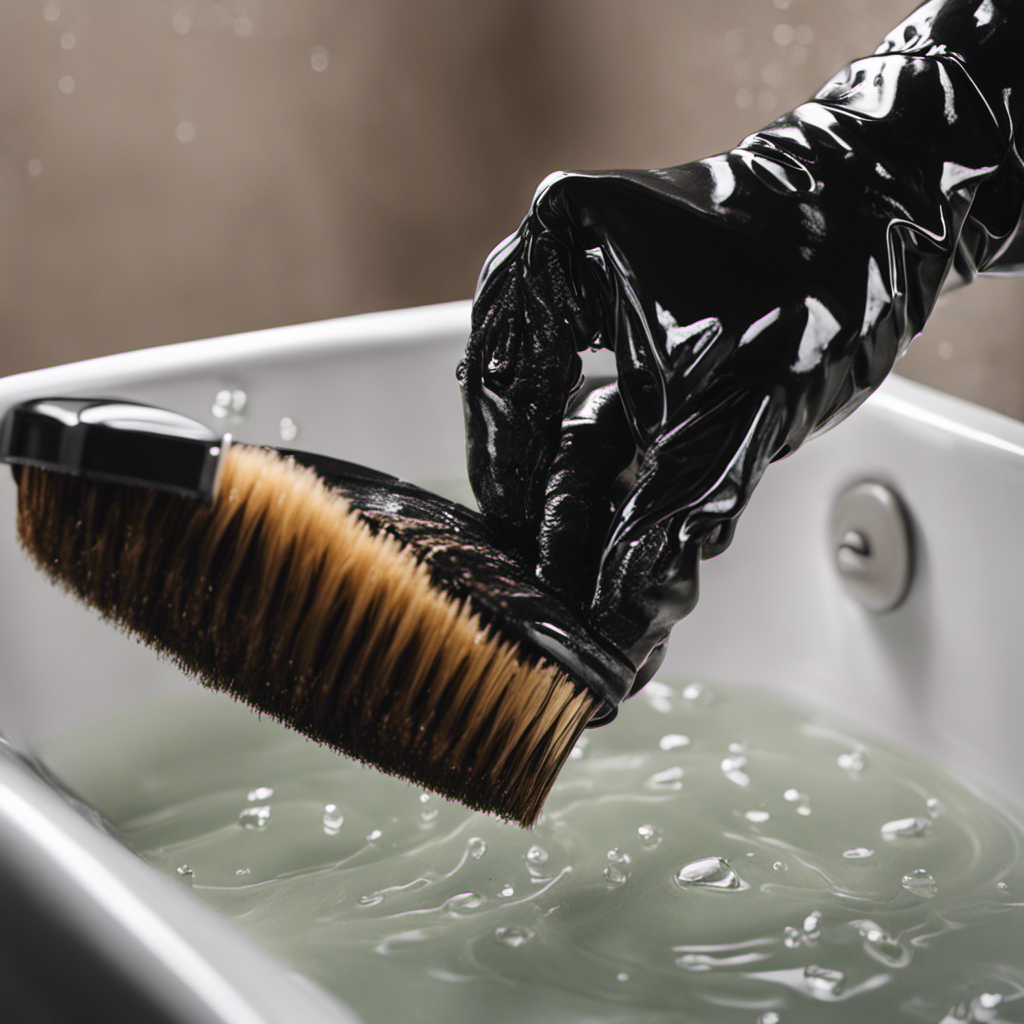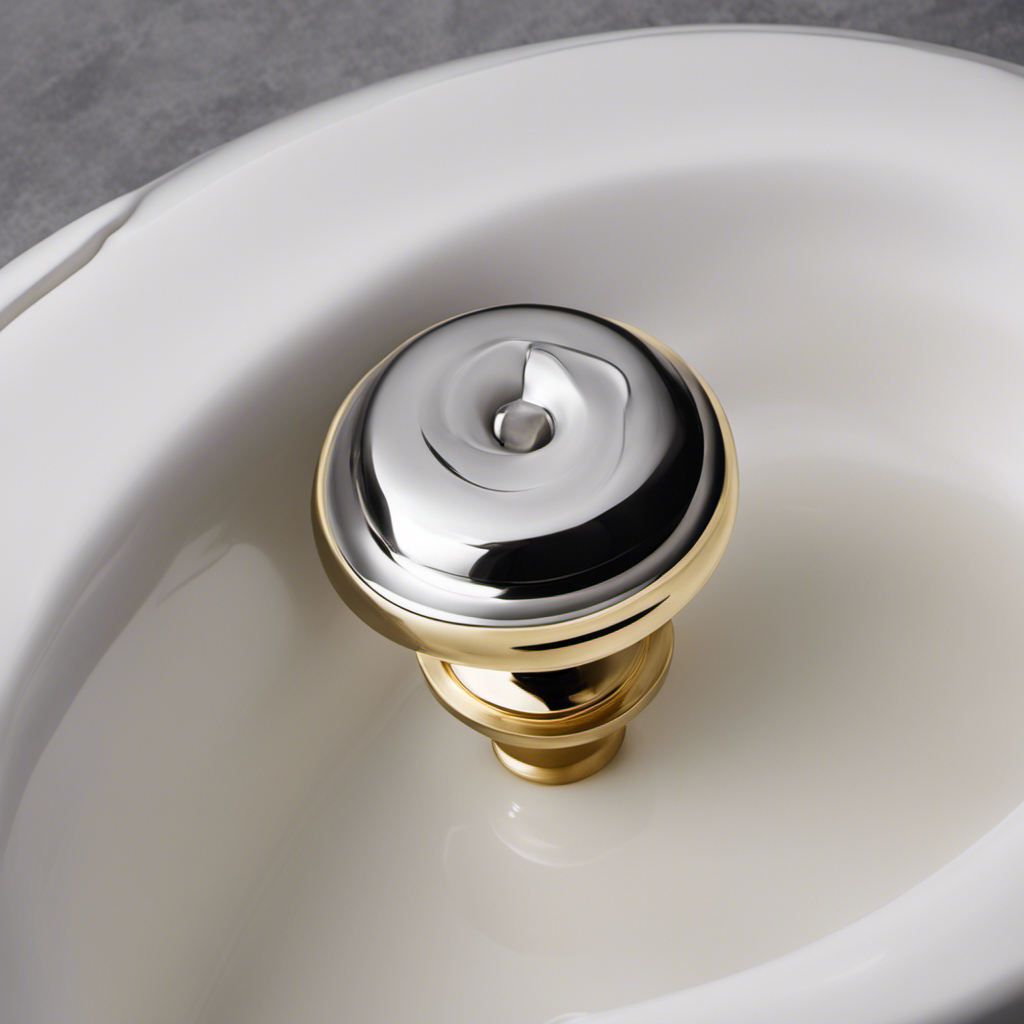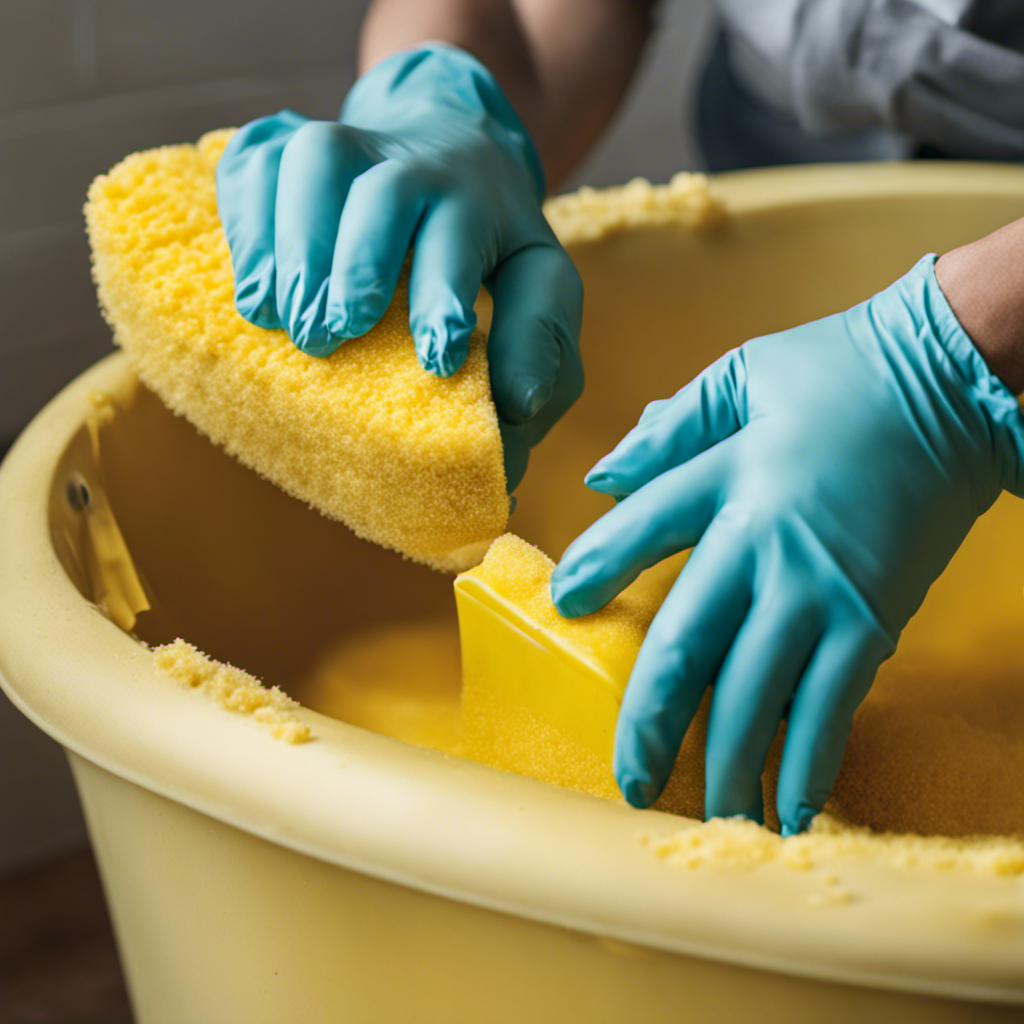I’ve always believed that a clean and well-maintained bathtub is essential for a relaxing and enjoyable bathing experience.
However, over time, the overflow drain in the bathtub can become clogged with debris and build-up, hindering proper drainage.
That’s why I’ve decided to share my knowledge and expertise on how to clean the overflow drain in a bathtub.
In this article, I will guide you through the necessary steps and provide you with valuable tips to prevent future clogs.
So, let’s get started and ensure your bathtub remains a haven of cleanliness and comfort.
Key Takeaways
- The overflow drain in a bathtub serves important functions and helps prevent water damage.
- Regular cleaning and maintenance of the overflow drain cover is essential to prevent dirt and grime buildup.
- Hair and debris should be cleared from the drain cover using natural cleaning solutions like vinegar and baking soda.
- Clearing the overflow drain pipe is important to prevent clogs, and hot water can be used to flush out debris.
Understanding the Overflow Drain in Your Bathtub
To understand the overflow drain in your bathtub, you’ll need to know how it functions and why it’s important for preventing water damage.
The overflow drain is a crucial component of bathtub maintenance as it helps to prevent water from overflowing and causing damage to your bathroom. It is typically located near the top of the bathtub, just below the faucet.
When the water level in the tub exceeds a certain point, it flows into the overflow drain and down the drainpipe, preventing it from spilling onto the floor.
If you notice that water is not draining properly through the overflow drain, it could be due to a clog or a malfunctioning mechanism. Troubleshooting overflow drains may involve removing any debris or buildup, checking the drainpipe for obstructions, or adjusting the drain mechanism if necessary.
Regular maintenance and prompt attention to any issues with the overflow drain can help ensure its proper functioning and prevent potential water damage in your bathroom.
Gathering the Necessary Tools and Supplies
You’ll need a few tools and supplies to get started on this task. Here’s a list of what you’ll need:
| Tools | Supplies | Additional Items |
|---|---|---|
| Plunger | Cleaning solution | Screwdriver |
| Drain brush | Sponge | Old toothbrush |
| Rubber gloves | Bucket | |
| Pipe snake | ||
| Microfiber cloth |
Choosing the right cleaning solution for your bathtub is crucial. Look for a product that is specifically designed for bathroom surfaces and is safe to use on your tub material. Avoid harsh chemicals that may damage the finish. When it comes to the overflow drain cover, proper maintenance is essential. Regularly clean it to prevent dirt and grime buildup, which can lead to clogs and unpleasant odors. Now that you have gathered the necessary tools and supplies, let’s move on to removing debris and build-up from the drain cover.
Transition: Now that we have our tools and supplies ready, let’s move on to the next step of cleaning the overflow drain – removing debris and build-up from the drain cover.
Removing Debris and Build-Up From the Drain Cover
Now that you have all the necessary tools and supplies, it’s time to tackle the task of removing debris and build-up from the cover. Here’s how you can do it:
-
Start by clearing any hair from the drain cover. Use a pair of tweezers or a small brush to gently remove any hair that may be trapped in the cover. Be careful not to push the hair further down the drain.
-
Next, mix equal parts vinegar and baking soda to create a natural cleaning solution. Pour the mixture over the drain cover and let it sit for about 15 minutes. The vinegar will help break down any build-up, while the baking soda will act as a gentle abrasive.
-
After 15 minutes, use a scrub brush or an old toothbrush to scrub the drain cover. Pay special attention to any stubborn build-up. Rinse the cover with warm water to remove any remaining residue.
By following these steps, you’ll be able to effectively remove debris and build-up from the drain cover.
Now, let’s move on to clearing the overflow drain pipe.
Clearing the Overflow Drain Pipe
Once you’ve finished clearing the hair and debris from the drain cover, it’s time to address the overflow drain pipe. This pipe is responsible for preventing water from overflowing onto your bathroom floor. If it becomes clogged, it can lead to water damage and unpleasant odors. To clear a clogged overflow drain, you can use drain cleaners specifically designed for this purpose. These cleaners are typically made with powerful chemicals that break down and dissolve any blockages in the pipe. It’s important to follow the instructions on the cleaner and use it effectively. Here is a table to help you understand the steps involved in clearing a clogged overflow drain:
| Step | Action |
|---|---|
| 1 | Remove excess water from the bathtub |
| 2 | Pour the drain cleaner into the overflow drain |
| 3 | Let the cleaner sit for the recommended time |
| 4 | Flush the drain with hot water to remove any remaining debris |
Preventing Future Clogs in the Overflow Drain
To avoid future clogs in the overflow drain, it’s important to regularly maintain and clean the surrounding areas. Here are some maintenance tips for a clog-free overflow drain:
-
Remove any hair or debris that may have accumulated on the drain cover. This can be done by simply wiping it with a damp cloth or using a small brush to gently scrub away any buildup.
-
Use a mixture of baking soda and vinegar to clean the drain. Pour about half a cup of baking soda followed by half a cup of vinegar down the overflow drain. Let it sit for a few minutes and then flush it with hot water. This will help remove any residue or odors.
-
Avoid using harsh chemicals or drain cleaners as they can damage the pipes and cause more clogs in the long run.
When cleaning the overflow drain, there are also common mistakes to avoid:
-
Don’t forget to clean the overflow cover as well. It can accumulate dirt and grime over time, so make sure to give it a good scrub.
-
Avoid using excessive force when cleaning the drain. This can cause damage to the pipes or dislodge any seals, leading to leaks.
-
Lastly, don’t neglect regular maintenance. By cleaning the overflow drain regularly, you can prevent future clogs and ensure a smooth flow of water.
Conclusion
In conclusion, cleaning the overflow drain in your bathtub is a necessary task to maintain proper functionality and prevent clogs. By understanding how the overflow drain works and gathering the right tools and supplies, you can effectively remove debris and build-up from the drain cover and clear the overflow drain pipe.
Taking these steps will help prevent future clogs and ensure a smooth drainage system in your bathtub.
Did you know that according to a study conducted by the National Association of Home Builders, 80% of plumbing issues are caused by clogged drains? This statistic emphasizes the importance of regular maintenance and cleaning to avoid costly repairs.










